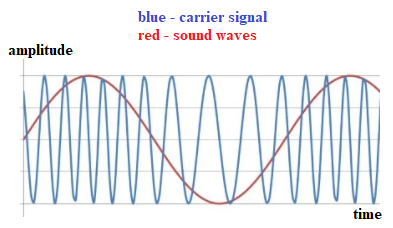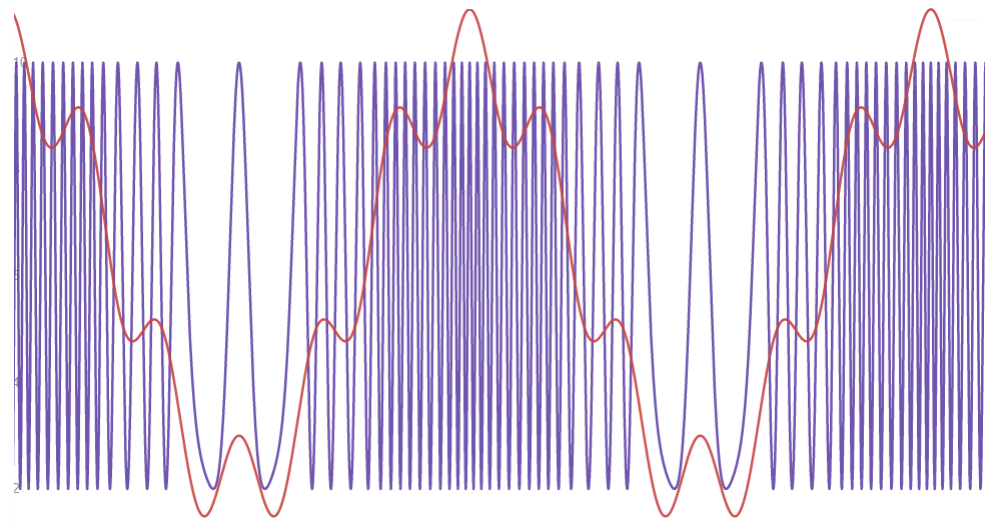Frequency Modulation
Unfortunately, amplitude modulation (AM), with its carrier frequency in the range from 540kHz to 1,600kHz, does not fit to transmit good quality (Hi-Fi) sound, especially on higher pitch notes, as was explained in the lecture "Amplitude Modulation" of this chapter.
The maximum audio frequency that is practical to transmit through AM radio is about 4.4kHz, while the sensitivity of the human ear goes up to 20kHz.
In addition, this type of modulation is too sensitive to radio noise.
The necessity to accommodate high quality transmission of sound waves caused new ideas and designs solutions.
A very useful invention was frequency modulation (FM).
First of all, frequency modulation is implemented within a carrier frequency range from 88mHz to 108mHz, which by itself helps to transmit a higher pitch audio signal of up to 15kHz.
Secondly, the basic principle of FM transmission is to represent sound waves, which are just changes in the air pressure, by a carrier signal's deviations from the base frequency assigned to it. Higher air pressure is represented by higher frequency of the carrier signal, lower air pressure is represented by a lower carrier frequency.
Amplitude of the carrier signal frequency remains always the same, only its frequency is fluctuating in synch with changes of the air pressure that carries a sound, as converted by a microphone into electric current.
All the deviations from the base frequency of the carrier signal must be within certain range assigned for each base frequency, so different radio stations, having different base frequencies of signal transmission, do not step over each other.
In the US the FM transmission uses the frequencies from 88mHz to 108mHz divided into 100 channels of 0.2mHz wide. That means, the frequency deviation from the base frequency of each FM transmitter should not exceed 0.1mHz up or down.
A picture below shows how the frequency of the carrier's signal (blue line) is changing in response to the most simple sound waves that represent a single note of a constant intensity (red line). Mathematically, the red line is a graph of an air pressure at some point in space as a function of time - a sinusoid for a single note of constant intensity.

(you can click the right mouse button and open this picture in another tab for better view)
What remains to discuss is a physical implementation of the frequency modulation.
This implementation involves changing the frequency of the transmitting oscillations of an electric current in the LC circuit connected to an antenna in synch with sound waves input from a microphone.
This can be accomplished by adding a variable capacitor into a circuit that is controlled by a current that represents the sound waves on the output of a microphone.
Changing the capacitance C in the LC circuit will effectively change the angular frequency ω=1/√L·C.
There are many different ways to put together such a device, we will leave this to special courses on radio electronics.
Finally, as an example of a more practical case of complicated sound waves that result in superposition of many different sources of sound, here is a picture of the sound waves (red) and modulated carrier signal (purple) with its frequency in synch with the sound waves.

(you can click the right mouse button and open this picture in another tab for better view)
As you see, higher intensity of sound waves (higher pressure of air) is represented by more frequent oscillations of the carrier signal and lower intensity of sound waves is represented by lower frequency of the carrier signal.
This picture intentionally presents the carrier signal of, generally, lower range of frequencies in order to visualize the individual oscillations.
In practice that range of oscillations of the carrier signal should be significantly higher to better represent each curve of sound waves.


No comments:
Post a Comment